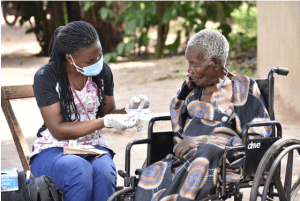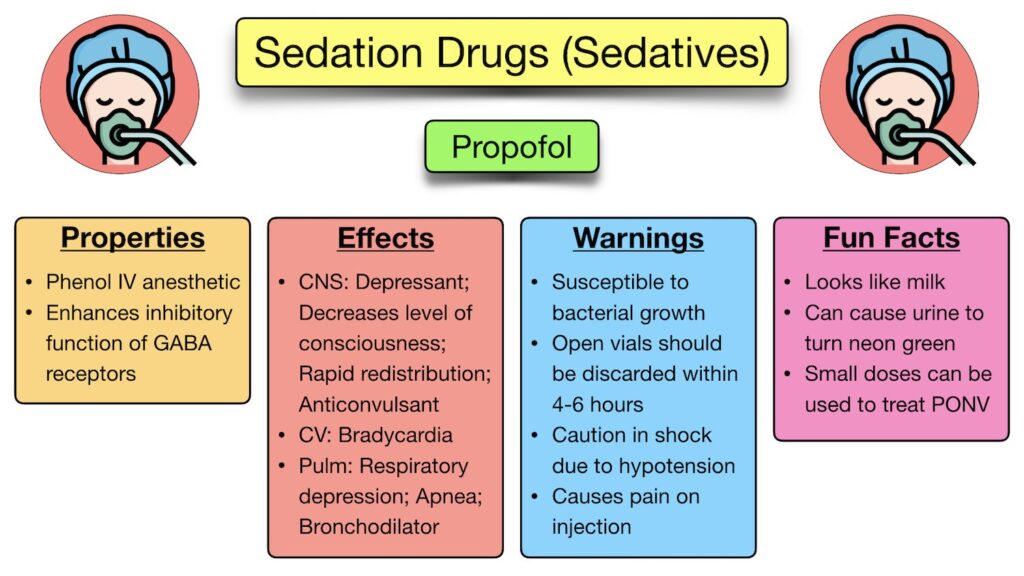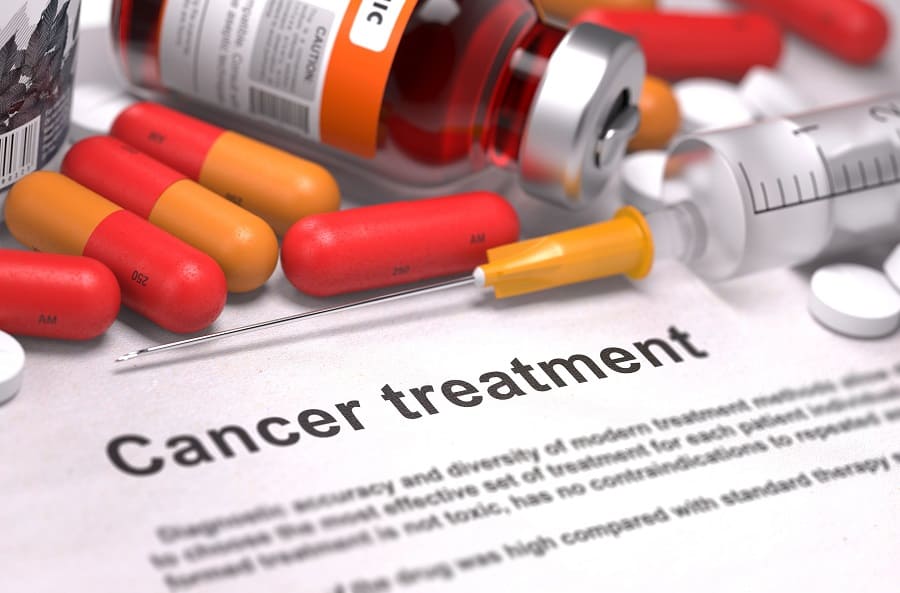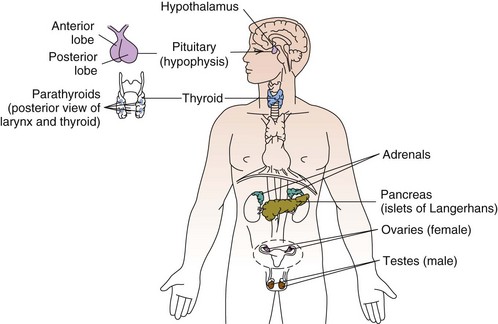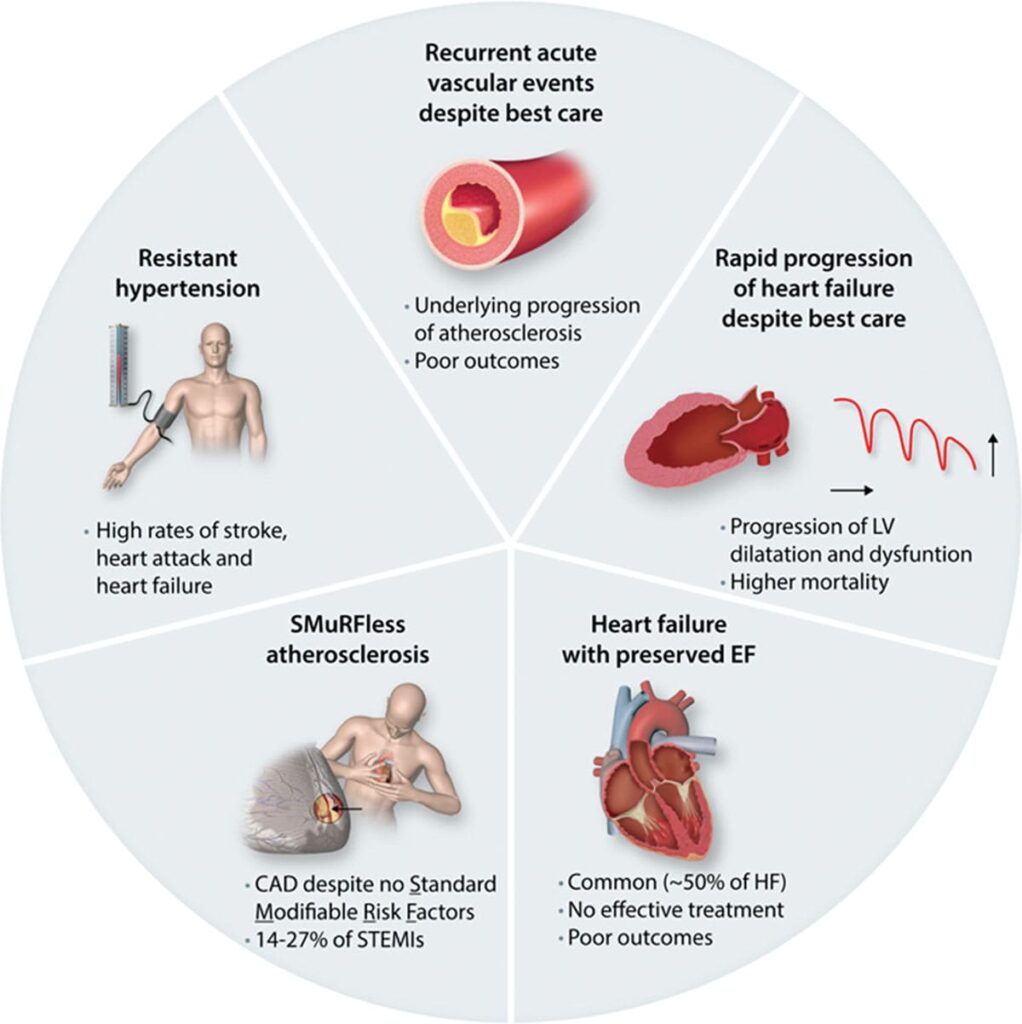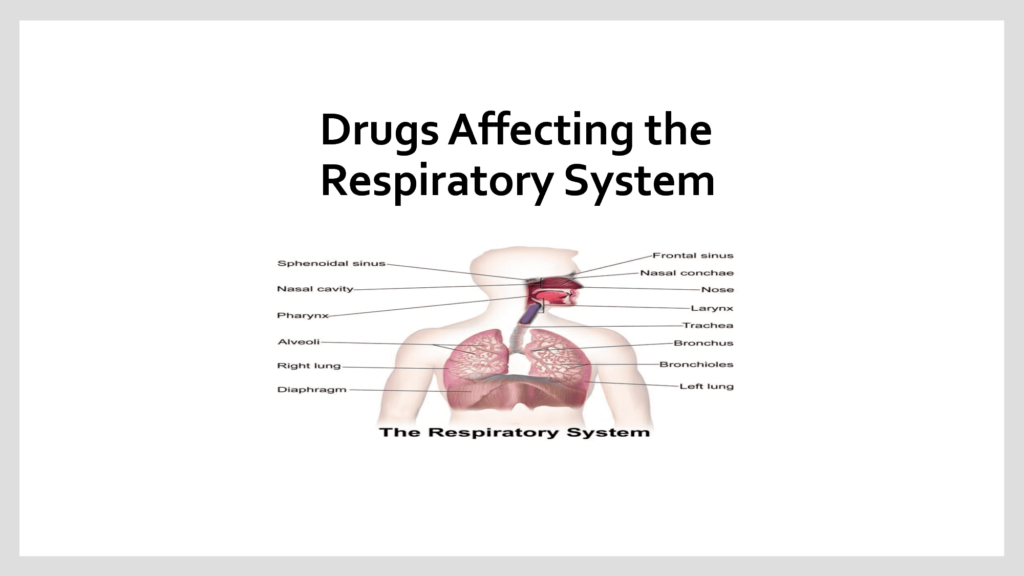Drugs Used in the Treatment of Epilepsy
Epilepsy is a disorder of brain function characterized by recurrent seizures that have a sudden onset. A patient should not be described as having epilepsy until a second non-febrile seizure occurs.
Seizure: A seizure is a paroxysmal discharge of cerebral neurons accompanied by a clinical phenomenon apparent to the patient or to an observer.
Classification of Epilepsy
Epileptic seizures (fits) present in several different forms depending on the site of the discharge and whether the discharge remains localized or spreads.
Partial Seizures: These are epileptic seizures in which the neuronal discharge remains localized in one area of the brain. They result in a disturbance of function such as abnormal sensation or movement of the limb without loss of consciousness. Partial seizures are subdivided as follows:
- Simple partial seizures (consciousness is not impaired)
- Complex partial seizures (consciousness is impaired)
Partial seizures may become secondarily generalized seizures if the neuronal discharge spreads to involve the entire brain.
Generalized Seizures: Generalized seizures are characterized by a neuronal discharge involving the whole brain with loss of consciousness. They are subdivided as follows:
Absence Seizures (Petit Mal): These are generalized seizures characterized by a sudden loss of consciousness lasting for a few seconds. It is usually accompanied by motor activity which may vary from eyelid blinking to more extensive tonic body movement. It is common in children and juveniles.
Myoclonic Seizures: These are characterized by brief jerks in the limbs which may be single or multiple. The duration of the seizure is a few seconds. It mainly occurs in children and juveniles.
Atonic Seizures: Atonic seizures are characterized by loss of postural tone; the head sags or the patient falls down.
Generalized Tonic-Clonic Seizures (Grand Mal Fits): These are characterized by a sudden attack with loss of consciousness and violent body jerking lasting 3-5 minutes. The patient regains consciousness spontaneously; incontinence, tongue biting, or other injuries may occur during the episode. Grand mal fits may be due to:
- Family history of epilepsy
Uncontrolled febrile convulsions in children
Head injuries
Infections (e.g., meningitis, HIV)
Birth trauma to an infant
Alcohol and drug abuse
Status Epilepticus: It is a seizure lasting for more than 30 minutes or several fits following one another without restoration of consciousness in between the fits. Status epilepticus is a common complication of grand mal epilepsy and it’s a medical emergency.
Management of Status Epilepticus:
- Position the patient to avoid injury
Give oxygen to support respiration
If hypoglycemia is suspected, give a bolus of 50 ml of 50% glucose IV
Consider giving parenteral thiamine if alcohol abuse is suspected
Give anticonvulsants such as diazepam IV, lorazepam IV, clonazepam, midazolam
Slow intravenous injection of phenytoin may be given if seizures recur or fail to respond to diazepam 30 minutes after it began
Phenytoin by intravenous infusion should be given at a dose of 15 mg/kg body weight at a rate not greater than 50 mg/minute.
Monitoring of blood pressure and ECG is necessary and phenytoin should be diluted with sodium chloride (normal saline) at a ratio of 1 mg of phenytoin: 1 ml of normal saline
Table 1: Summary of Choices of Antiepileptic Drugs
Seizure Type | Treatment Options |
Partial Seizures | Carbamazepine, sodium valproate, pregabalin, lamotrigine, gabapentin, phenytoin |
Generalized Tonic-Clonic Seizures (Grand Mal) | Carbamazepine, lamotrigine, sodium valproate, phenytoin |
Absence Seizures (Petit Mal) | Ethosuximide, sodium valproate |
Myoclonic Seizures | Sodium valproate, clonazepam |
Status Epilepticus | Diazepam, clonazepam, midazolam, and phenytoin |
Note: Monotherapy is preferable to a multiple-drug regimen and treatment is therefore initiated with a single drug, increasing the dose gradually until seizures are brought under control or adverse effects become severe. If treatment with the first drug fails, it is preferable to try alternative single first-line antiepileptics before giving combinations of drugs. The change-over from one antiepileptic to another should be made cautiously, withdrawing the first drug only when the new regimen has been largely established. Drugs with different modes of action should be selected for combined therapy, to reduce the risk of additive adverse effects. Many antiepileptic drugs interact with each other; therefore, precautions must be taken during prescribing.
Carbamazepine
Available Preparations:
- Tablets: 100 mg, 200 mg
Syrup: 20 mg/ml
Available Brands: Tegretol®, Storilat®, Carbatol®, Carbadac®, Carbazina®
Pharmacokinetics: It is absorbed slowly from the GIT, distributed widely throughout the body, crosses the placenta, and accumulates in fetal tissue. It is metabolized by the liver to an active metabolite and is excreted in urine and feces.
Indications:
Contraindications:
Dosage:
- Epilepsy: Initially 100-200 mg 1-2 times daily, increased gradually after 2 weeks to the usual dose 400-1200 mg daily in divided doses. In some cases up to 1.6-2 g daily may be needed.
Elderly: Initially 50 mg twice daily then increase to 400-1200 mg daily.
Children 1 month – 12 years: Initially 5 mg/kg at night or 2.5 mg/kg twice daily, increased as necessary by 2.5-5 mg/kg every 3-7 days. Maintenance dose 5 mg/kg 2-3 times daily. Doses up to 20 mg/kg daily may be used.
Trigeminal Neuralgia: Initially 100 mg 1-2 times daily, increased gradually according to response to 200 mg 3-4 times daily. Up to 1 g daily may be required in some cases.
Prophylaxis of Bipolar Disorder Unresponsive to Lithium: Initially 400 mg daily in divided doses, increased until symptoms are controlled. Usual range 400-600 mg daily, max 1.6 g daily.
Neuropathic Pain: Initially 100 mg twice daily, increased gradually until pain is relieved. Maintenance dose 200-600 mg daily. Do not exceed 1.2 g daily.
Side Effects:
- Nausea
Ataxia
Vomiting
Dizziness
Drowsiness
Dry mouth
Blurred vision
Headache
Anorexia
Agitation
Diarrhea
Confusion
Constipation
Impotence
Thrombocytopenia
Arthralgia
Stevens-Johnson syndrome
Gynaecomastia
Drug Interactions:
- Clarithromycin, erythromycin, cimetidine, isoniazid may inhibit hepatic metabolism of carbamazepine with resultant increase of its serum concentration and toxicity
Rifampicin, phenytoin, and phenobarbital may decrease serum concentrations of carbamazepine
Antimalarial drugs may antagonize the activity of carbamazepine
Use with alcohol and other CNS drugs may potentiate adverse effects of carbamazepine
Use with verapamil may significantly increase the serum levels of carbamazepine
Carbamazepine may decrease the effectiveness of theophylline and oral contraceptives
Carbamazepine may increase the metabolism of warfarin, valproic acid, haloperidol, and phenytoin
Key Issues to Note:
- Take carbamazepine with food to prevent stomach upset
Swallow controlled-release tablets whole, do not chew or crush them
Grapefruit juice may increase the absorption and blood concentration of carbamazepine
The drug is structurally similar to TCAs; some risk of activating latent psychosis or agitation in elderly patients exists
Avoid alcohol during therapy
The drug may cause drowsiness and impair ability to perform activities requiring mental alertness or physical coordination
The drug may cause dry mouth and photosensitivity reactions
Phenytoin
Available Preparations:
- Tablets: 100 mg
Injection: 50 mg/ml
Available Brands: Phenyto-S®, Epanutin®
Pharmacokinetics: It is absorbed slowly from the small intestine, distributed widely throughout the body, metabolized by the liver to inactive metabolites, and excreted in urine.
Indications:
Contraindications:
- Hypersensitivity to phenytoin or other hydantoins
Sinus bradycardia
Avoid parenteral use in sinus bradycardia
Sino-atrial block
2nd and 3rd degree heart block
Stokes-Adams syndrome (IV)
Hepatitis
Dosage:
Oral:
- Adult: Initially 150-300 mg daily as a single dose or in 2 divided doses, increased gradually according to response to the usual dose 200-500 mg daily.
- Children: Initially 5 mg/kg daily in 2 divided doses, usual dose range 4-8 mg/kg daily, max 300 mg daily.
Arrhythmias:
- Adults: Loading dose 250 mg 4 times a day for 1 day, then 250 mg/day for 2 days, maintenance dose 300-400 mg/day 1-4 times a day.
Side Effects:
- Gastric intolerance
Drowsiness
Confusion
Slurred speech
Gum hyperplasia
Headache
Sedation
Insomnia
Blurred vision
Skin rashes
Acne
Hirsutism
Nausea
Nystagmus
Vomiting
Diplopia
Behavioral disturbance
Tremors
Anorexia
Constipation
Blood disorders
Coarse facies
Fever
Drug Interactions:
- Alcohol and other CNS depressants may increase CNS depression
Anticoagulants, cimetidine, fluoxetine, fluconazole, ketoconazole, isoniazid, and sulphonamides may increase phenytoin blood concentration and risk of toxicity
Lidocaine, propranolol may increase cardiac depressant effects caused by phenytoin
Phenytoin may decrease the effects of oral contraceptives, corticosteroids, haloperidol, furosemide, doxycycline, etc.
Therapeutic effects of phenytoin may be decreased by barbiturates, carbamazepine, ethanol, folic acid, antacids, charcoal, and pyridoxine among others
Key Issues to Note:
- To ensure consistent absorption, phenytoin should be administered at the same time with regards to meals
Phenytoin may be taken with food or milk to decrease GI upset
Avoid alcohol during therapy
Abrupt withdrawal may precipitate status epilepticus
Advise the patient to maintain good oral hygiene
Sodium Valproate
Available Preparations:
- Tablets: 200 mg, 300 mg
Syrup: 200 mg/5 ml
Available Brands: Epilim®, Petilin®, Valparin Chrono®
Indications:
Contraindications:
Dosage:
- Adult: Initially 600 mg daily in 2 divided doses, preferably after food, increased by 200 mg daily every 3 days to a max of 2.5 g daily, usual maintenance dose 1-2 g daily.
Children under 12 years with body weight over 20 kg: Initially 400 mg daily in divided doses, increased according to response, usual range 20-30 mg/kg daily, max 35 mg/kg daily.
Children < 20 kg: Initially 20 mg/kg daily in divided doses.
Side Effects:
- Nausea
Vomiting
Increased appetite
Abdominal cramps
Sedation
Thrombocytopenia
Behavioral disturbance
Hyperammonemia
Menstrual disturbances
Tremor
Ataxia
Oedema
Diarrhea
Weight gain
Gastric irritation
Transient hair loss
Drowsiness
Drug Interactions:
- Sodium valproate increases plasma concentrations of phenobarbital, primidone, phenytoin, zidovudine
Aspirin may increase the effect of sodium valproate
Sodium valproate absorption may be reduced by colestyramine
Cimetidine and erythromycin may increase the effect of sodium valproate
Concomitant use with clonazepam may cause absence seizures
Antacids may increase the oral absorption of sodium valproate
Key Issues to Note:
Phenobarbitone
Available Preparations:
Available Brands: B-tone®
Pharmacokinetics: Phenobarbitone is well absorbed after oral administration, distributed widely to body tissues, metabolized by the liver, and excreted in urine.
Indications:
- Generalized tonic-clonic seizures
Partial seizures
Neonatal seizures
Febrile convulsions
Status epilepticus
Contraindications:
- Hypersensitivity to phenobarbitone
Absence seizures
Porphyria
Respiratory depression
Severe liver impairment
Dosage:
Generalized Tonic-Clonic Seizures, Partial Seizures:
- Adult: 60-180 mg once daily at night
- Children: 5-8 mg/kg daily
Febrile Convulsions:
- Children: Up to 8 mg/kg daily
Side Effects:
- Sedation
Ataxia
Nystagmus
Somnolence
Respiratory depression
Behavioral disturbance
Megaloblastic anemia
Mental depression
Allergic skin reaction
Confusion
Constipation
Hypotension
Drowsiness
Slurred speech
Drug Interactions:
- Phenobarbitone may increase the metabolism of carbamazepine
Phenobarbitone may decrease the effect of digoxin, corticosteroids, oral anticoagulants, tricyclic antidepressants, oral contraceptives, and metronidazole
The sedative effect of phenobarbitone is enhanced by other CNS depressants including alcohol
Sodium valproate increases the blood concentration and risk of toxicity of phenobarbitone
Key Issues to Note:



